What is a Stanchion?
What is a Stanchion?
What is a stanchion and what are they used for?
The Webster dictionary definition of a stanchion is: An upright bar, beam, post, or support (as for a roof or a ship’s deck). However, the word stanchion is commonly used to describe barriers used to create a queue system. A little thought of and ‘unseen’ product stanchions are part of our everyday lives, if you ever waited in a line at an airport, retail store or entertainment venue then more than likely have stood between stanchions. There are two basic types of stanchions: rope and retractable belt stanchions. Rope stanchions are the traditional barrier still preferred for more classic settings such as red-carpet events and high-end hotels.
Retractable belt stanchions are the modern iteration of the rope stanchion, they offer the practical advantage of having the belt retract into the post when the stanchion is not in use. This feature makes set up, take down and storage faster and easier than with rope stanchions. The practicality of retractable belt stanchions has led to their use outside of queueing, and these stanchions are now widely used as safety barriers to restrict access to worksites and other hazardous areas.
The Purpose of Stanchions
Put simply stanchions are used to organize customers waiting for service. The need to form waiting customers into a line is driven by one of the key principles of queuing, that customers feel stressed if they believe they may not be served in the order in which they arrived. By forming an organized single file line customers relax because they are assured of service in order of arrival. Organizing waiting customers can also reduce the floor space needed to accommodate a given number of people and increase service efficiency as it is clear who is next for service, eliminating delay as customers jockey for position. Stanchions are used to form either straight line queues or for longer lines a ‘snake’ or ‘zigzag’ which is called a queueing corral.
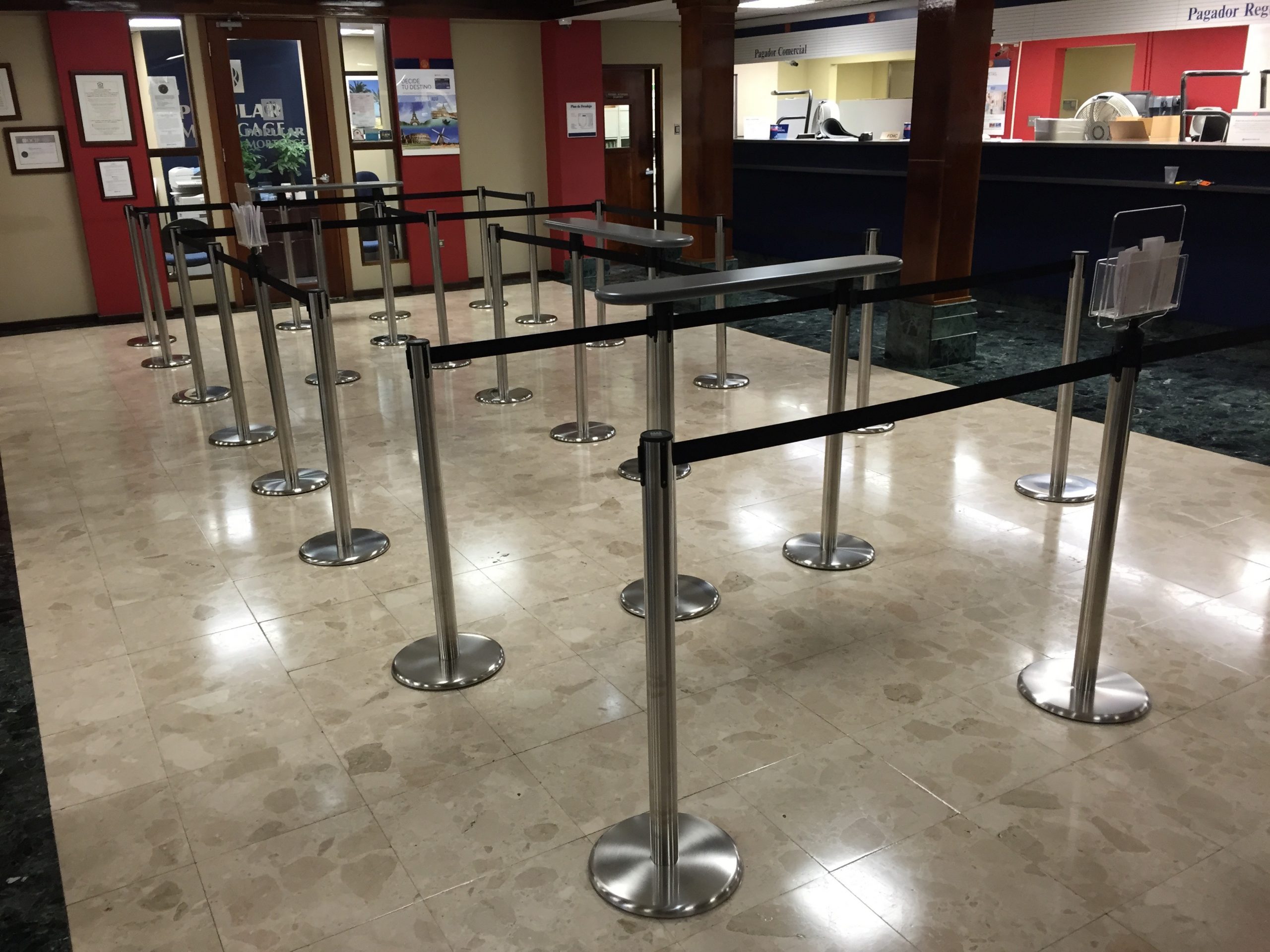
Another purpose of stanchions is restricting access. In this case the stanchion is used as a barrier to block access to a retracted or closed area. Typically set up in the straight-line when used as a barrier, retractable belt stanchions are particularly suitable for this application because each stanchion creates a much longer length of barrier than other types of steel or plastic barricade.
How To Setup A Queue with Stanchions
The queue layout should be simple and obvious, with a single entrance and exit. The entry point should be marked with clear signage and signage should also be used at the head of the queue to tell the customer what to do next, for example “Wait. Here”. The lanes of the queue should be around 3ft wide to provide enough room for wheelchairs, but not enough room so that customers can easily pass one another. How far apart the stanchions are set depends on the length of the stanchion’s belt. Longer belts require fewer stanchions which speed set up time and reduces the storage space needed when the stanchions are not in use. Whatever the length of the belt it is important not to space the stanchions, so the belts are fully extended. Leave 12-18” of belt inside the stanchion to provide for ‘play’ should the belt be pushed against.

For safety applications, stanchions are often used to section off areas that are restricted to outside visitors. In these cases, the stanchions are usually set up in long straight lines and here using stanchions with very long belts is a particular advantage. As safety barriers are often temporary and the stanchions are set up and taken down frequently the use of a stanchion cart can assist to speed the process while also providing mobile racking for storing the stanchions.
Finding The Right Stanchion
There are many makes and models of stanchion to choose from. So how do you go about selecting the best fit for your needs? The key differences are in belt length, post construction base type. Here are some issues to consider when choosing a stanchion.
Safety First
As stanchions are used by the public, safety is the first and most important consideration. Retractable belt stanchions use a high-tension spring to retract the belt, it is essential you purchase stanchions with a belt brake that ensures the belt retracts slowly and safely. The belt end should also be designed to be able to lock onto the receiving stanchion, this stops accidental release and prevents customers from tampering with the belt.
Function vs Fashion
One of the main considerations in selecting a stanchion is the base. The more affordable option is a shell of galvanized steel filled with concrete, which is rust resistant and low cost. The other common option is cast iron, which is more costly but practically indestructible and will give a longer service life.

The third option for stanchion bases is rubber. Often used for outdoor and safety applications rubber bases cannot rust and have the durability of cast iron. Lighter than the other two base types, rubber bases provide stability to the stanchion by being wider which is why they are less suited to queueing applications.
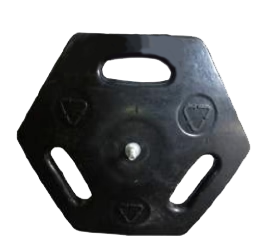
Belt Length
Belt length is a key factor when making a stanchion purchase decision. The initial purchase cost of a long length stanchion may be higher, but the number of stanchions needed will be lower. When considering purchase price, always divide the price of the stanchion by the length of the belt, this will give you the price per foot of barrier and that is the ultimate determinator of which model is the most cost effective.
Customizing The Belt
The last, but certainly not least factor to consider are the options for customizing. Positioned in high traffic areas such as customer queues, stanchion belts are a powerful advertising medium. A standard 11’ stanchion belt has almost 2 sq ft of advertising space and is ideal for custom printing with logos or promotional messaging. In safety applications the belts can be used to alert pedestrians to the hazard with messages like “DANGER – KEEP OUT’. Furthermore, the belts also come in a wide range of solid colors allowing you to blend the queue system with your corporate colors or venue décor. To truly increase the impact of branding or safety messages we also offer our unique Xtra 3” wide belt option. This belt is 50% wider than the standard 2” belt which allows for much larger, more visible branding.
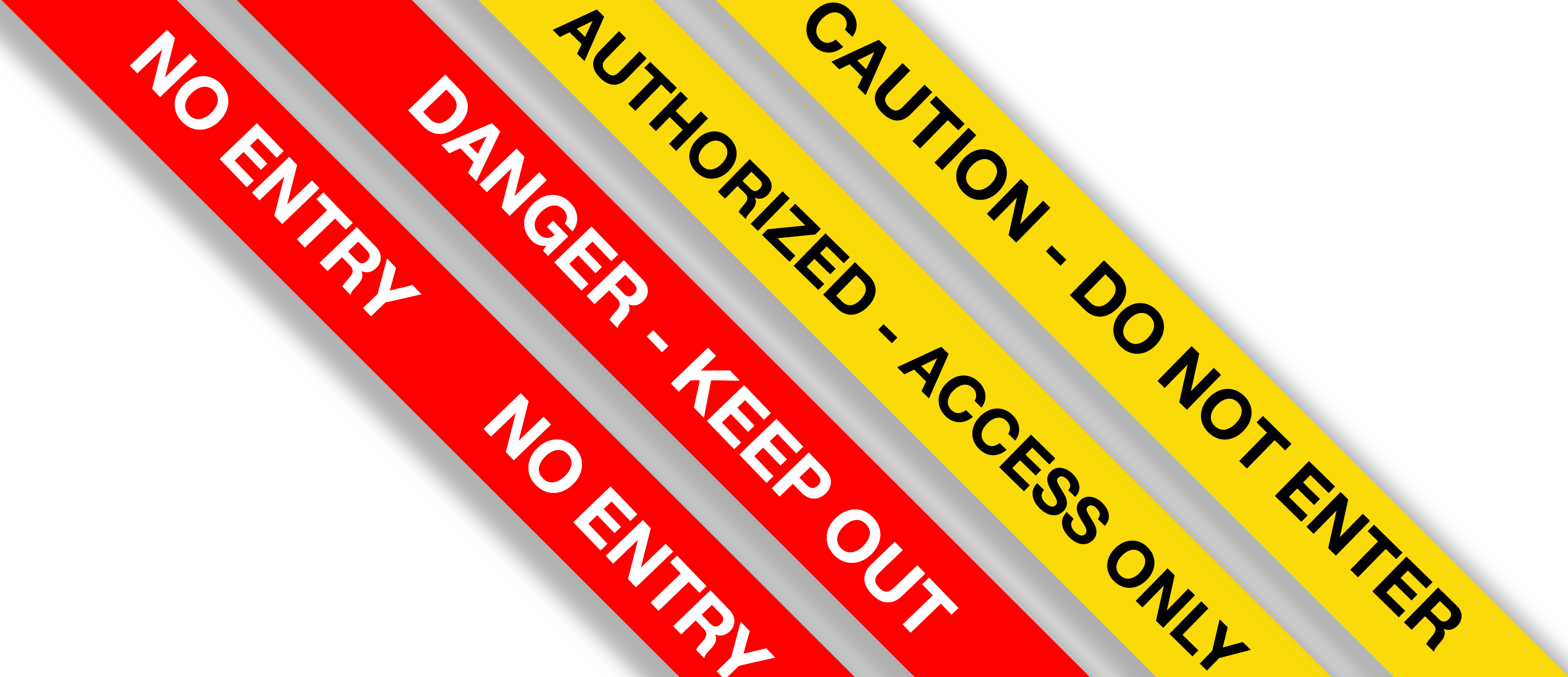
Conclusion
Stanchions are essential tools for organizing customer queues, managing crowds and ensuring safety by restricting access. While the dictionary definition of stanchion does not include queueing barriers it is this definition which is most widely used. Stanchions are one of the most ubiquitous of products, used by most people on a daily basis and play an important part in managing front of house operations for retailers, airports, event venues or anywhere where people stand in line. Selecting the right stanchion for your needs can save money and increase operational efficiency and at Crowd Control Company you will find the widest range of stanchions on the market.
If you want to see more content like this one be sure to check out our Youtube
If you want to see more products like this one, be sure to check out our other Safety Stanchions.
If you want to see more products like this one, be sure to check out our other Belt Stanchions.
If you want to see more products like this one, be sure to check out our other Post and Rope Stanchions.
If you liked this post be sure to check out our other post on our RollerPro Twin 300



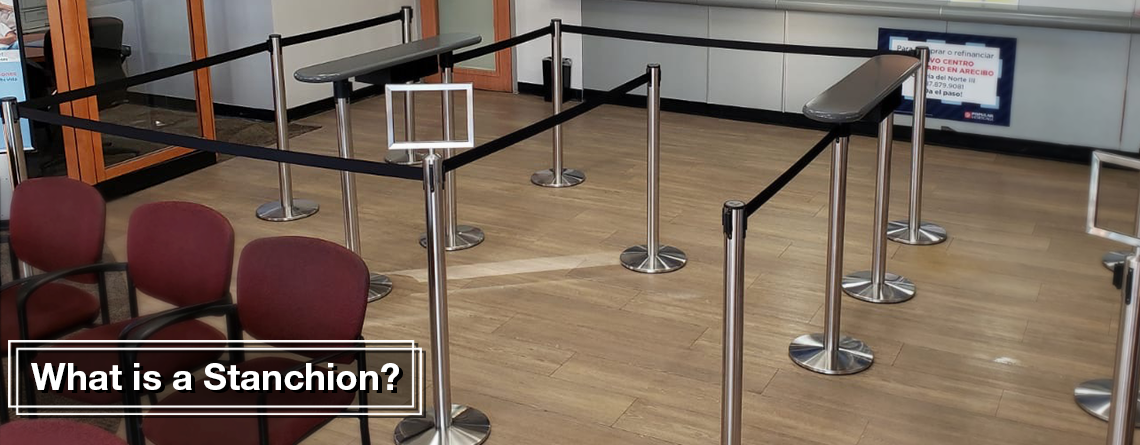
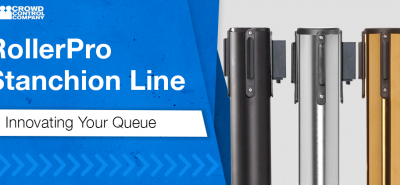
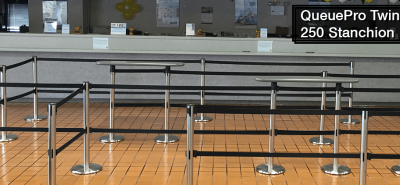

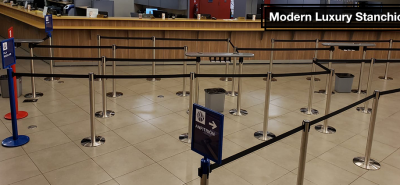



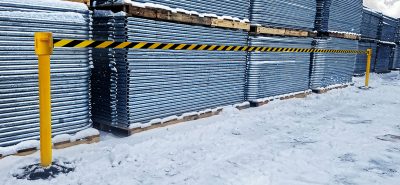



LEAVE A COMMENT